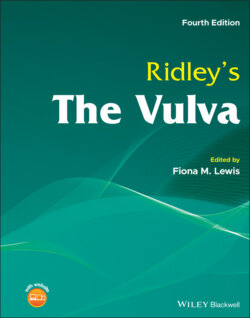Читать книгу Ridley's The Vulva - Группа авторов - Страница 133
CHAPTER MENU
ОглавлениеThe consultation History Examination History and examination in children Documentation Management
In recent years, patients have become much more aware of their own health and better informed about their disease, diagnosis, and management. However, attitudes to vulvovaginal disease continue to be very much affected by the contemporary social and cultural background. Despite campaigns to educate women about vulval self‐examination, encouraging them to talk openly about their symptoms and to seek help early, there is still a certain amount of stigma attached to genital disease. Women are often embarrassed to discuss vulval problems [1] and often fear their symptoms may be due to a sexually transmitted infection. Trotula in the eleventh century said ‘since these organs happen to be in a retired location, women on account of modesty and the fragility and delicacy of the state of these parts dare not reveal the difficulties of their sickness to a male doctor’, and this is still true for some women today. The sex of the patient and the healthcare professional has a big influence on patient preference when it comes to genital examination, and some women do still often wish to be seen by a female doctor. Interestingly, those with vulval problems are more likely to be referred to a specialised vulval clinic if seen by a female general practitioner [2].
However, not only does the patient find seeking medical advice about vulval symptoms challenging, but many clinicians also find it difficult. Surveys of paediatric [3] and paediatric surgical trainees [4] report a lack of confidence in dealing with vulval and vaginal conditions and a need for more training. The same is true for dermatology and gynaecology trainees [5,6], where exposure to vulval teaching was very variable. When patients are referred to a vulval clinic, a diagnosis is offered in less than half the cases by the referring physician, and 27% of these were changed after the patient had been seen [7]. A questionnaire survey of fellows of the International Society for the Study of Vulval Disease (ISSVD) revealed that 29% were self‐taught [8]. The formation of international societies with members who demonstrate a specific interest in vulvovaginal disorders has helped to develop vulval disease as a sub‐specialty. This collaboration between relevant specialists aims to increase knowledge and ultimately improve care for women with these conditions. Several countries now have multidisciplinary groups that meet regularly and also organise postgraduate courses dedicated to teaching about vulval disease.
